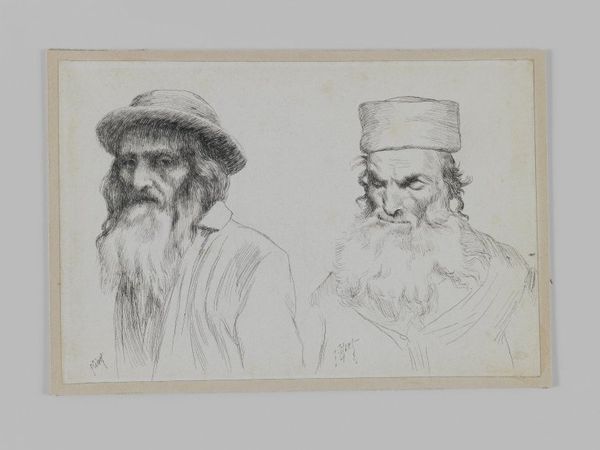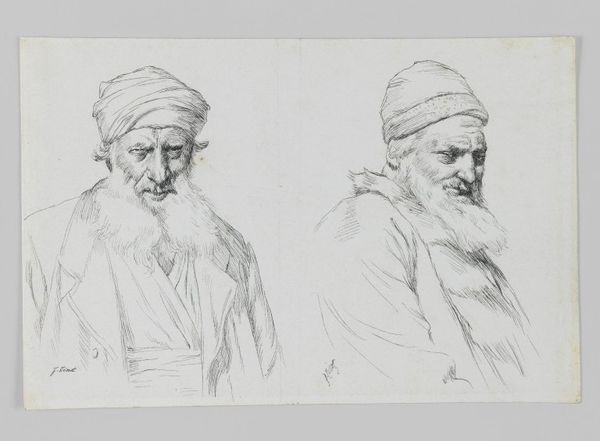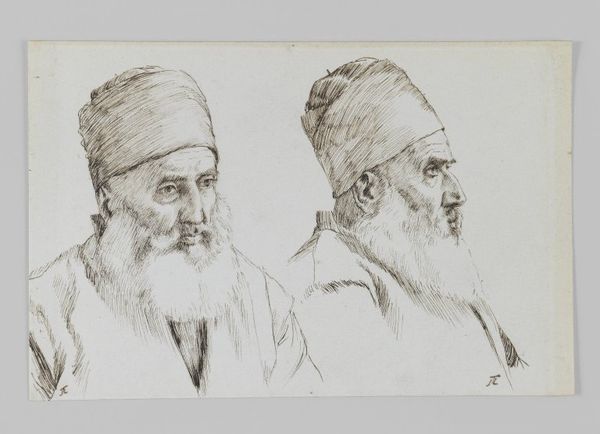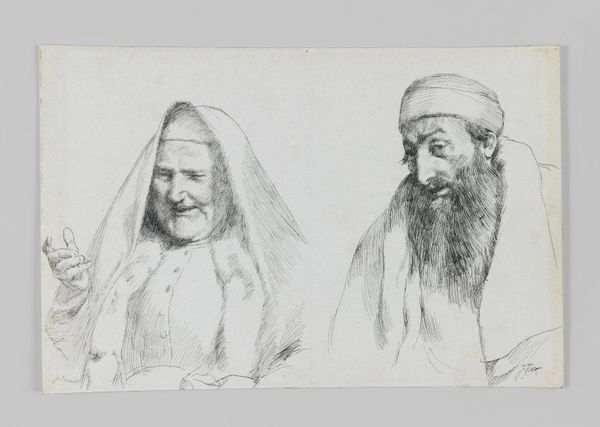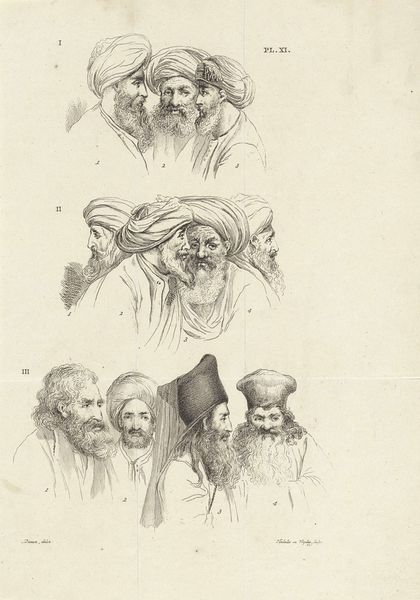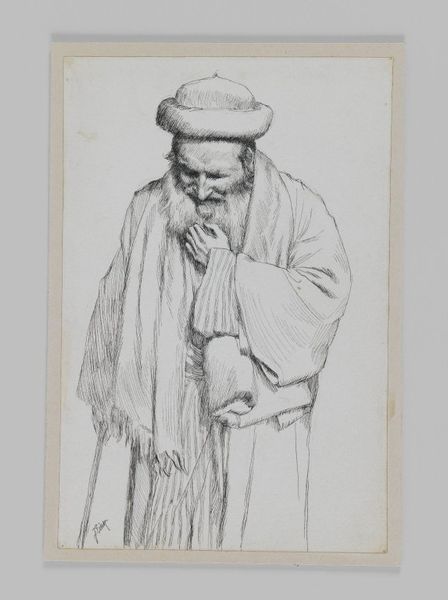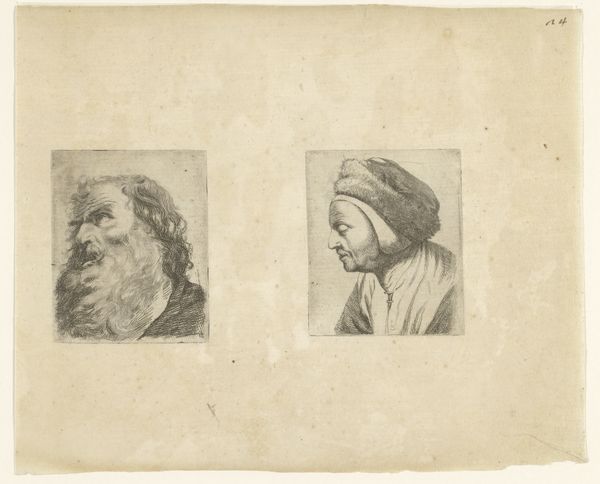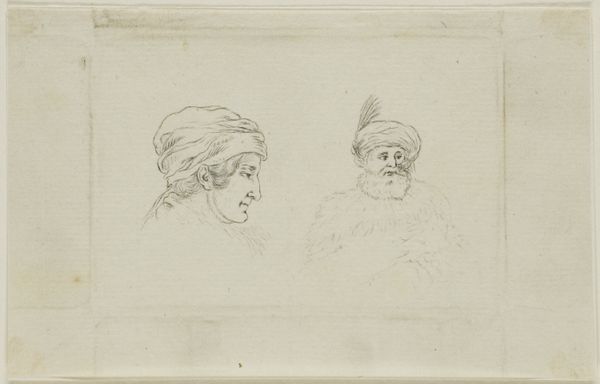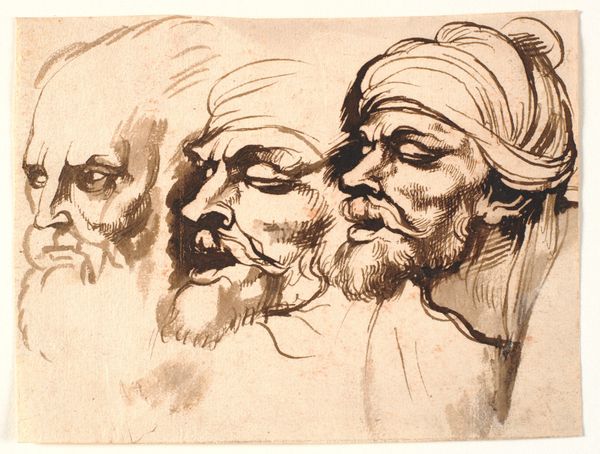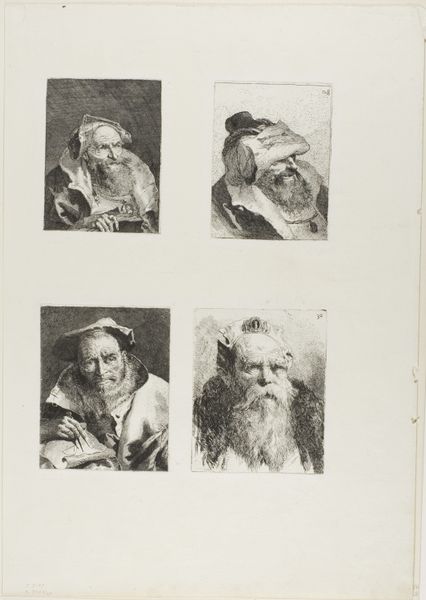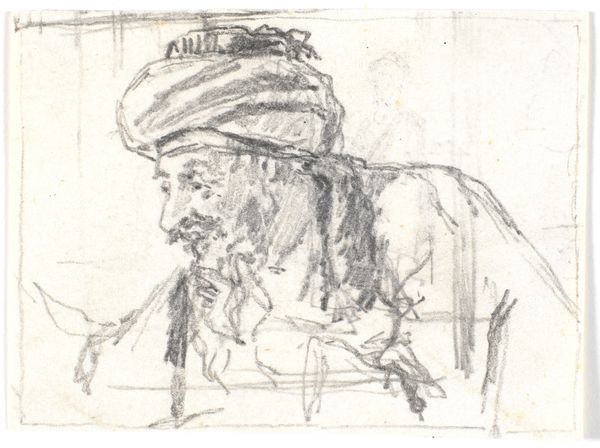
drawing, pencil
#
portrait
#
drawing
#
pencil drawing
#
pencil
#
line
#
academic-art
#
realism
Dimensions: 12.1 x 18.4 cm
Copyright: Public domain
Editor: So, here we have James Tissot's pencil drawing, "Type of Jew," from 1889. It's strikingly stark, these two figures with their penetrating gazes rendered so plainly. What do you make of it? Curator: Stark is a great word. Tissot often surprises me, moving as he did through high society scenes and then these intensely observed faces. To me, this piece vibrates with a sort of quiet contemplation. The lines are economic, but manage to communicate a sense of deep weariness or maybe even wisdom earned through hardship. What do you feel looking at their eyes? Editor: There's definitely a story there. The eyes are heavy, yes, like they've seen a lot. Is it fair to read some level of stereotyping into it given the title though? I'm curious how it relates to the climate of the time. Curator: Absolutely fair. The late 19th century wasn't exactly known for its nuance in representing different cultures. The title is indeed…provocative, shall we say. However, Tissot himself had Jewish ancestry, which adds another layer. Were these portraits commissioned? Studies for a larger work? These are all questions to ponder. Doesn't their posture also communicate so much? Editor: True. The slumped shoulders, the heads bowed. There's a weight in that too, isn’t there? I hadn't considered Tissot’s background either. It makes you think about the complexity of identity and representation, right? Curator: Precisely! Art rarely gives us easy answers. I see a searching within, a grappling with heritage, perhaps. It's less a definitive statement and more a… hesitant inquiry. Don't you agree? Editor: Yeah, I see that now. I initially just saw it on the surface, but now there’s so much more depth to unpack. Curator: Always, the surface is merely a starting point my friend. Always look a little deeper.
Comments
No comments
Be the first to comment and join the conversation on the ultimate creative platform.
